Your search “Keep%20the%20death%20penalty%abolished%20in%20the%20ePhilippfines%20e%20e%20e%20e%20e%20e%20e%20e%20e%20e/page/www.humanrights.asia/resources/report/2011/AHRC-sur-008-2011/act_download/file ”

Member(s)
Parliamentarians for Global Action (PGA)
on 30 April 2020
Parliamentarians for Global Action (PGA), a non-profit, non-partisan international network of over 1,200 legislators in approximately 130 elected parliaments around the globe, aims to promote peace, democracy, the rule of law, human rights, gender equality and population issues by informing, convening, and mobilizing parliamentarians to realize these goals. The network of legislators’ programme of work […]
2020
United States

Member(s)
Human Rights Activists in Iran (HRAI)
on 30 April 2020
Human Rights Activists in Iran (also known as HRAI and HRA) is a non-political and non-governmental organization comprised of advocates who defend human rights in Iran. HRAI was founded in 2006 and aims to promote, safeguard and sustain human rights in Iran. The organization keeps the Iranian community and the world informed by monitoring human […]
Iran (Islamic Republic of)
Member(s)
Kurdistan Human Rights Association-Geneva (KMMK-G)
on 30 April 2020
Kurdistan Human Rights Association-Geneva (KMMK-G) is an independent organization, with no political affiliation. KMMK-G was established in 2006 to serve as a bridge between the Kurdish civil society and the United Nations (UN) agencies and International institutions on the one hand, and the Kurdish and Iranian civil society on the other hand. The organization aims […]
Iran (Islamic Republic of)

Member(s)
Serbia Against Capital Punishment (SACP)
on 30 April 2020
Serbia Against Capital Punishment (SACP) was formed in 2012 to work towards universal abolition of the death penalty and to oppose its reintroduction in Serbia or any other country. It also opposes torture, as well as all other inhuman and degrading punishments. SACP maintains a data base of more than 7.000 persons sentenced to death […]
Serbia
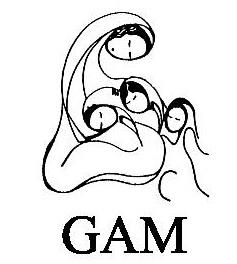
Member(s)
Grupo de Apoyo Mutuo (GAM)
on 30 April 2020
Mandate and goals: Organization of relatives of missing persons illegally detained which works for justice, investigating past cases, opening legal proceedings against the national system and the human rights system. Kind of actions: We work for justice, for the strengthening of the institutions linked to the criminal investigation and against the death penalty. Actions aiming […]
Guatemala
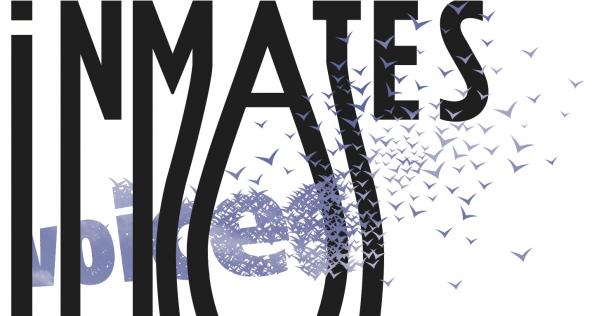
Member(s)
Inmates’Voices
on 30 April 2020
Switzerland

Member(s)
The Death Penalty Project (DPP)
on 30 April 2020
The Death Penalty Project is an international legal action charity, based in London, working to promote and protect the human rights of those facing the death penalty. We provide free legal representation to death row prisoners around the world, with a focus on Commonwealth countries, to highlight miscarriages of justice and breaches of human rights. […]
United Kingdom

Member(s)
Abdorrahman Boroumand Center for the Promotion of Human Rights and Democracy in Iran
on 30 April 2020
Abdorrahman Boroumand Center previously know as Abdorrahman Boroumand Foundation Mandate and goals : Promoting universal human rights in Iran and documenting the violation of the right to life in the Islamic Republic of Iran Kind of actions : Creation of an online memorial to the victims of the violation of the right to life in […]
Iran (Islamic Republic of)
Member(s)
Save Anthony
on 30 April 2020
Save Anthony is a charity registered under the 1901 French law. It is designed to promote the story and finance the privately retained legal team of Anthony Mungin, sentenced to death and incarcerated at the Union Correctional Institution in Raiford, Florida (USA) since February 23rd, 1993. Anthony Mungin has always maintained his innocence for the […]
France

Member(s)
Witness to Innocence
on 30 April 2020
The mission of Witness to Innocence (WTI) is to unite U.S. exonerated death row survivors and their loved ones to become a powerful force for social justice and transformation. WTI seeks to abolish the death penalty, to reform the U.S. criminal justice system to prevent wrongful convictions, and to secure fair financial compensation and social […]
United States

Member(s)
The Human Rights Centre “Viasna”
on 30 April 2020
The Human Rights Centre “Viasna” is a non-governmental human rights organization active since 1996. It is a nation-wide NGO with a central office in Minsk and a dozen local offices across the country. Viasna has about 200 members. In 2003, the Supreme Court groundlessly cancelled the registration of Viasna for its participation in the observation […]
Belarus

Member(s)
Avocats Sans Frontières France
on 30 April 2020
The mandate and objectives of Avocats Sans Frontières France are: 1. Defending lawyers and defenders of human rights subject to threats or attacks of any kind because of their exercise professional; 2. Contribute to the effective implementation of human rights, universally recognized for ensuring the acces to any private person to a free and independent […]
France

Member(s)
National Lawyers Guild (NLG)
on 30 April 2020
The National Lawyers Guild (NLG) is an association dedicated to the need for basic and progressive change in the structure of the US political and economic system. It seeks to unite the lawyers, law students, legal workers and jailhouse lawyers of America in an organization that shall function as an effective political and social force […]
United States

Member(s)
Ville de Braine-l’Alleud
on 30 April 2020
The town of Brain-l’Alleud is located in Brabant wallon in the Hain valley, about twenty kilometres from Brussels. It has 37,000 inhabitants. Previously the site of the Battle of Waterloo in 1815, today the town welcomes much more peaceful activities, including a large number of NGOS and in particular an Amnesty International group and the […]
Belgium

Member(s)
Palestinian Center for Human Rights
on 30 April 2020
The Palestinian Centre for Human Rights (PCHR) is an independent Palestinian human rights organisation based in Gaza City. It enjoys Consultative Status with the ECOSOC of the United Nations and is an affiliate of the International Commission of Jurists (Geneva), the International Federation for Human Rights (Paris), the Euro-Mediterranean Human Rights Network (Copenhagen) and the […]
State of Palestine

Member(s)
Ligue des droits de l’Homme
on 30 April 2020
Founded in 1898 during the Dreyfus affair, the League for Human Right (LDH) has a rich history thanks to a century of activism and attentive monitoring of all major contemporary issues. Originally, its mandate was to defend an innocent man, victim of anti-Semitism and reason of state, but the LDH expanded its actions to include […]
France

Member(s)
Lifespark
on 30 April 2020
lifespark is a Swiss organization and was founded in January 1993. lifespark is a non-profit organization, financed by membership dues and donations. All work for lifespark is done on a voluntary basis. lifespark has a central governing body; it has members from all linguistic regions of Switzerland. As of the end of 2012, the organization […]
Switzerland

Member(s)
Journey of Hope… From Violence to Healing
on 30 April 2020
“Journey of Hope…from Violence to Healing is an organisation led by murder victim family members joined by death row family members, family members of the executed, the exonerated, and others with stories to tell, that conducts public education speaking tours and addresses alternatives to the death penalty. Every year, the organisation arranges a Journey of […]
United States

Member(s)
Conférence Internationale des Barreaux
on 30 April 2020
The International Bar Association Conference (Conférence internationale des barreaux – CIB) was founded by representatives of 24 bar associations of countries that share both the French language and a common judicial tradition. It is now composed of 83 members. The CIB’s objective is to create a cooperation structure between them. It groups together associations that […]
France

Member(s)
Città di Reggio Emilia
on 30 April 2020
For a long time, the city of Reggio Emilia has been proud of its strong vocation for the struggle in defense of Human Rights, which is supported by the commitment of the entire community. An example is that, in order to strengthen its contribution in the struggle against apartheid in South Africa, the city signed […]
Italy

Member(s)
International Association of Lawyers
on 30 April 2020
Established in 1927, and with members in 110 countries, the UIA (International Association of Lawyers) is a global and multi-cultural organization for the legal profession that facilitates professional development, stimulates learning and networking, and promotes the Rule of Law. UIA is open to all the world’s lawyers, both general practitioners and specialists. The UIA’s members […]
France
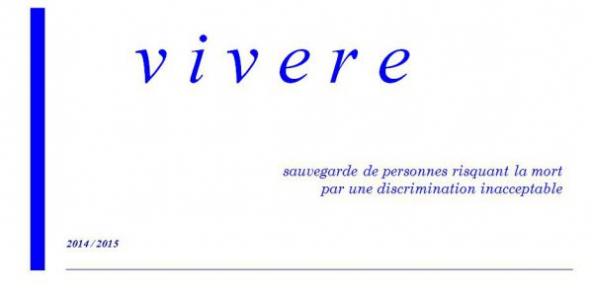
Member(s)
Vivere
on 30 April 2020
Switzerland

Member(s)
Cornell Center on Death Penalty Worldwide
on 30 April 2020
A research, training, and advocacy center focused on promoting international human rights law in the application of the death penalty.
United States
Member(s)
Association Mauritanienne des Droits de l’Homme (AMDH)
on 30 April 2020
Mauritania
Member(s)
Kenya Human Rights Commission
on 30 April 2020
Kenya

Member(s)
Conseil national des barreaux
on 30 April 2020
France
Document(s)
Dangerousness, Risk Assessment, and Capital Sentencing
By Aletha M. Claussen-Schulza / Psychology, Public Policy and Law / Marc W. Pearceb / Robert F. Schopp, on 1 January 2004
2004
Article
United States
More details See the document
Judges, jurors, police officers, and others are sometimes asked to make a variety of decisions based on judgments of dangerousness. Reliance on judgments of dangerousness in a variety of legal contexts has led to considerable debate and has been the focus of numerous publications. However, a substantial portion of the debate has centered on the accuracy and improvement of risk assessments rather than the issues concerning the use of dangerousness as a legal criterion. This article focuses on whether dangerousness judgments can play a useful role in capital sentencing decisions within the framework of “guided discretion” and “individualized assessment” set forth by the Supreme Court of the United States. It examines the relationship between these legal doctrines and contemporary approaches to risk assessment, and it discusses the potential tension between these approaches to risk assessment and these legal doctrines. The analysis suggests that expert testimony has the potential to undermine rather than assist the sentencer’s efforts to make capital sentencing decisions in a manner consistent with Supreme Court doctrine. This analysis includes a discussion of the advances and limitations of current approaches to risk assessment in the context of capital sentencing.
- Document type Article
- Countries list United States
- Themes list Networks,
Document(s)
A Comparative Analysis of Capital Punishment: Statutes, Policies, Frequencies, and Public Attitudes the World Over
By Dagny Dlaskovich / Rita Simon / Lexington Books, on 1 January 2002
2002
Book
More details See the document
A Comparative Analysis of Capital Punishment provides a concise and detailed history of the death penalty. Incorporating and synthesizing public opinion data and empirical studies, Simon and Blaskovich’s work compares, across societies, the types of offenses punishable by death, the level of public support for the death penalty, the forms the penalty takes, and the categories of persons exempt from punishment.
- Document type Book
- Themes list Public opinion,
logo-Kurdpa
on 29 November 2023
2023
Document(s)
Viêt Namese : Liệu Hình phạt Tử hình Có Tác dụng Ngăn chặn Tội phạm Giết người ở Nhật Bản?
By David T. Johnson / Asian Law Centre, on 8 September 2020
2020
Multimedia content
Japan
More details See the document
Không giống như ở Mỹ, nơi tràn ngập các nghiên cứu về tử hình và tác dụng răn đe của hình phạt này, có rất ít nghiên cứu về hình phạt tử hình và tác dụng răn đe của nó ở Nhật Bản. Mặc dù vậy, người dân và các quan chức nước này vẫn đưa ra những nhậnđịnh đầy tự tin đối với chủ đề này. Trên thực tế, tác dụng răn đe được xem là “điểm tranh cãi chủ chốt giữa các lập luận ủng hộ và phản đối” hình phạt tử hình ở Nhật Bản. Khó khăn trong việc thu thập các số liệu chuẩn mực về tội phạm từ Chính phủ Nhật Bản đã khiến cho việc tiến hành một nghiên cứu nghiêm túc về đề tài này gần như là bất khả thi. Bài viết này sử dụng các số liệu thống kê hàng tháng về tội phạm giết người và tộiphạm giết người cướp mà trước không thể tiếp cận được để xem xét liệu việc tuyên và thực thi án tử hình ở Nhật Bản có tác dụng ngăn chặn những tội phạm kể trên trong giai đoạn từ năm 1990 đến 2010 hay không. Và phát hiện chính của nghiên cứu này là hình phạt tử hình không có tác dụng răn đe tội phạm giết người và tội phạm cướp của giết người trong giai đoạn nói trên. Cần phải có thêm nghiên cứu về đề tài này, tuy nhiên, tại thời điểm hiện tại Chính phủ Nhật Bản không có bất cứ căn cứ chắc chắn nào để tiếp tục khẳng định nước này cần duy trì hình phạt tử hình vì hình phạt này giúp ngăn chặn tội phạm có tính đặc biệt nghiêm trọng.
- Document type Multimedia content
- Countries list Japan
Document(s)
A BRIEF INTRODUCTION TO THE INDIAN JUDICIAL SYSTEM AND COURT HIERARCHY
By MARY KOZLOVSKI / Asian Law Centre, on 1 January 2019
2019
Multimedia content
India
More details See the document
This paper provides an introduction to the Indian judicial system and court hierarchy, outlining the jurisdiction of constitutional and statutory courts and tribunals and the appointment, tenure and removal of judges. It describes forms of alternative dispute resolution that have emerged in recent decades, partly to combat delays in the court system, and informal dispute resolution bodies that mediate family disputes, such as Sharia courts. The paper concludes by discussing the contentious issues of delay in the court system, public interest litigation, and appointments to the Supreme and High Courts of India.
- Document type Multimedia content
- Countries list India
Document(s)
Does the Death Penalty Deter Homicide in Japan?
By David T. Johnson / Asian Law Centre, on 1 January 2017
2017
Multimedia content
Japan
More details See the document
Unlike the United States, where death penalty and deterrence studies are legion, there has been little research about the death penalty and deterrence in Japan, though the paucity of studies has not discouraged citizens and officials from making confident claims about this issue. Indeed, deterrence has been called “the core of argumentation for and against” the death penalty in Japan. Serious research on this subject has beenall but impossible because of difficulties obtaining decent crime data from the Japanese government. This paper uses monthly homicide and robbery-homicide statistics thatwere previously unavailable to examine whether death sentences and executions in Japan deterred these crimes from 1990 to 2010. The main finding is that the death penalty did not deter homicide or robbery-homicide during this period. More research is needed on this subject, but at present the Japanese government has no sound basis for continuing to claim that the country needs to retain the death penalty because it detersheinous crime.
- Document type Multimedia content
- Countries list Japan
- Themes list Deterrence , Death Penalty,
Document(s)
Responsible Business Engagement on the Death Penalty. A Practical Guide
By Responsible Business Initiative on the Death Penalty, on 1 January 2019
2019
Working with...
frMore details See the document
Business engagement in the death penalty is critical because of the impact it can have. Putsimply: the power is in your hands. If your business is looking for a human rights issue whereit can achieve measurable change, advocacy on the death penalty must be considered.Global support for the death penalty is declining. Meanwhile, competition for investment isfierce. Governments and the public at large care more about job creation and a healthy economythan a system of executions. Therefore, the voices of businesses and business leaders havea huge role to play in shaping public dialogue about whether to keep – or end – the use ofcapital punishment.
- Document type Working with...
- Themes list Networks, Death Penalty,
- Available languages Entreprises Responsables et Engagements sur la Peine de Mort: Guide Pratique
Article(s)
Jamaica vote illustrates retentionist trend in the Caribbean
on 9 January 2009
Jamaican lawmakers voted to keep capital punishment and the government seems determined to use it. Caribbean abolitionists are battling similar moves across the region.
2009
Jamaica
Public Opinion
Saint Kitts and Nevis
Document(s)
Reducing Facial Stereotype Bias in Consequential Social Judgments: Intervention Success With White Male Faces
By Youngki Hong, Kao-Wei Chua, & Jonathan B. Freeman, Columbia University, on 25 January 2024
2024
Article
United States
More details See the document
Published on December 18, 2023.
Initial impressions of others based on facial appearances are often inaccurate yet can lead to dire outcomes. Across four studies, adult participants underwent a counterstereotype training to reduce their reliance on facial appearance in consequential social judgments of White male faces. In Studies 1 and 2, trustworthiness and sentencing judgments among control participants predicted whether real-world inmates were sentenced to death versus life in prison, but these relationships were diminished among trained participants. In Study 3, a sequential priming paradigm demonstrated that the training was able to abolish the relationship between even automatically and implicitly perceived trustworthiness and the inmates’ life-or-death sentences. Study 4 extended these results to realistic decision-making, showing that training reduced the impact of facial trustworthiness on sentencing decisions even in the presence of decision-relevant information. Overall, our findings suggest that a counterstereotype intervention can mitigate the potentially harmful effects of relying on facial appearance in consequential social judgments.
- Document type Article
- Countries list United States
Document(s)
Helpful Hints and Advice on Online Harassment
By World Coalition against the Death Penalty , on 10 August 2021
2021
Campaigning
Public Opinion
frMore details Download [ pdf - 165 Ko ]
Online advocacy efforts by human rights organizations face increasingly dangerous threats. In this short guide, we elaborate a few helpful hints and
advice, as well as list a compilation of resources that organizations can refer to handle online harassment.
- Document type Campaigning
- Themes list Public Opinion
- Available languages Astuces et conseils utiles face au harcèlement en ligne
Document(s)
The Dark At the Top of the Stairs: Four Destructive Influences of Capital Punishment on American Criminal Justice
By David T. Johnson / Franklin Zimring / Social Science Research Network , on 1 January 2011
2011
Academic report
More details See the document
Executionhas also (1) had a powerful negative influence on the substantive criminal law; (2) promoted the practice of using extreme penal sanctions as status rewards to crime victims and their families; (3) provided moral camouflage for a penalty of life imprisonment without possibility of parole, which is almost as brutal as state killing; and (4) diverted legal andjudicial resources from the scrutiny of other punishments and governmental practicesin an era of mass imprisonment. This chapter discusses these four latent impacts of attempts to revive and rationalize the death penalty in the United States.
- Document type Academic report
- Themes list Arbitrariness,
Document(s)
Showing Remorse: Reflections on the Gap between Expression and Attribution in Cases of Wrongful Conviction
By Richard Weisman / Canadian Journal of Criminology and Criminal Justice, on 1 January 2004
2004
Article
Canada
More details See the document
This paper seeks first to show that persons who are convicted of crimes can be perceived as either remorseful or as lacking in remorse. This division establishes a moral hierarchy that has profound implications for the characterization and disposition of persons who are so designated. Second, using both Canadian and American cases, it looks at how inclusion in the category of the unremorseful affects the characterization and disposition of those who have been wrongfully convicted. Finally, it suggests that remorse is a major site of conflict between persons who are wrongfully convicted and officials within the criminal justice system, conflict that involves the use of institutional pressure to encourage the expression of remorse, on the one hand, and the mobilization of individual resources to resist those expressions.
- Document type Article
- Countries list Canada
- Themes list Networks,
Document(s)
Opting for Real Death Penalty Reform
By James S. Liebman / Ohio State Law Journal, on 1 January 2002
2002
Article
United States
More details See the document
The capital punishment system in the United States is broken. Studies reveal growing delays nationwide between death sentences and executions and inexcusably high rates of reversals and retrials of capital verdicts. The current system persistently malfunctions because it rewards trial actors, such as police, prosecutors, and trial judges, for imposing death sentences, but it does not force them either to avoid making mistakes or to bear the cost of mistakes that are made during the process. Nor is there any adversarial discipline imposed at the trial level because capital defendants usually receive appointed counsel who either do not have experience trying capital cases or who receive inadequate resources from the State to pay litigation expenses. Instead, the appellate system is forced to deal with large amounts of error, creating backlog and delays. This article proposes a radical trade-off for capital defendants in which they agree to give up existing post-conviction review rights in return for a real assurance of better qualified, higher quality trial counsel. This proposal will avoid the traps of window dressing reforms, save states a good bit of the expense of appellate review, and make the capital punishment system more fair, efficient, and effective.
- Document type Article
- Countries list United States
- Themes list Legal Representation,
Document(s)
Factsheet for Prison Staff
By World Coalition Against the Death Penalty, on 1 January 2018
2018
Working with...
frMore details Download [ pdf - 959 Ko ]
While the death penalty remains, persons with mental disabilities are at risk of being sentenced to death and executed in breach of international standards. This briefing paper aims to help prison staff act ethically and professionally when dealing with people on death row.
- Document type Working with...
- Themes list Mental Illness, Intellectual Disability,
- Available languages Fiche pour le personnel pénitentiaire
Document(s)
Digital Proceedings Oslo 2016 – 6th World congress against the death penalty
By Ensemble contre la peine de mort (ECPM), on 8 September 2020
2020
Multimedia content
frMore details See the document
This publication brings together the contributions of experts and discussions among participants at the 6th World Congress against the Death Penalty held in Oslo, Norway, in June 2016.
- Document type Multimedia content
- Available languages Actes numériques Oslo 2016 - 6ème Congrès mondial contre la peine de mort
Document(s)
Arguing for the Death Penalty: Making the Retentionist Case in Britain, 1945-1979
By Thomas Wright / University of York, on 1 January 2010
2010
Multimedia content
United Kingdom
More details See the document
There is a small body of historiography that analyses the abolition of capital punishment in Britain. There has been no detailed study of those who opposed abolition and no history of the entire post-war abolition process from the Criminal Justice Act 1948 to permanent abolition in 1969. This thesis aims to fill this gap by establishing the role and impact of the retentionists during the abolition process between the years 1945 and 1979. This thesis is structured around the main relevant Acts, Bills, amendments and reports and looks briefly into the retentionist campaign after abolition became permanent in December 1969. The only historians to have written in any detail on abolition are Victor Bailey and Mark Jarvis, who have published on the years 1945 to 1951 and 1957 to 1964 respectively. The subject was discussed in some detail in the early 1960s by the American political scientists James Christoph and Elizabeth Tuttle. Through its discussion of capital punishment this thesis develops the themes of civilisation and the permissive society, which were important to the abolition discourse. Abolition was a process that was controlled by the House of Commons. The general public had a negligible impact on the decisions made by MPs during the debates on the subject. For this reason this thesis priorities Parliamentary politics over popular action. This marks a break from the methodology of the new political histories that study ‘low’ and ‘high’ politics in the same depth.
- Document type Multimedia content
- Countries list United Kingdom
- Themes list Death Penalty, Country/Regional profiles,
Document(s)
The Politics of Fear and Death: Successive Problems in Capital Federal Habeas Corpus.”
By Bryan A. Stevenson / New York University (NYU), on 1 January 2002
2002
Article
United States
More details See the document
The Antiterrorism and Effective Death Penalty Act (AEDPA) of 1996 was drafted, enacted, and signed in an atmosphere of anger and fear. The legislation, which includes substantial cutbacks in the federal habeas corpus remedy, was Congress’s response to the tragedy of the Oklahoma City bombing. During the congressional hearings on the bills that culminated in AEDPA, the proponents of the legislation claimed that its habeas corpus restrictions and other provisions were necessary to fight domestic terrorism. The Senate bill was approved by the House on April 18, 1996, the day before the one-year anniversary of the Oklahoma City bombing. President Bill Clinton invoked the bombing in a statement he issued at the time of the Senate’s passage of the legislation and again when he signed the legislation into law. Even at the time of the debates, some courageous legislators were willing to denounce the fallacious connection that the bill’s proponents drew between the bombing and the broader issues of the scope and availability of habeas corpus review. Many of the habeas corpus restrictions ultimately built into AEDPA had been under consideration by Congress since 1990, though none had been adopted. The congressional proponents of these restrictions seized upon the Oklahoma City tragedy as a means of accomplishing their longstanding goal to scale back federal habeas corpus review.
- Document type Article
- Countries list United States
- Themes list Networks,
Document(s)
Examining Public Opinion about Crime and Justice: A Statewide Study
By Eric Johnston / Barbara Sims / Criminal Justice Policy Review, on 1 January 2004
2004
Article
United States
More details See the document
As noted by Flanagan (1996), public opinion polls about crime and justice can act as a social barometer providing important data to policy makers regarding what the public is willing, or is not willing, to accept when it comes to proposed legislation and/or intervention programming. This paper reports findings from the 2001 Penn State Poll, a random telephone survey of Pennsylvanians, 18 years of age or older, in which citizens were asked about their attitudes toward and perceptions of such issues as fear of crime, capital punishment, the most important goal of prison, and where they would most like to see their tax dollars spent (building more prisons vs. early intervention programs with troubled youth). Significant differences were found within certain demographic groups across these sets of questions, and in a predictive model, gender, race/ethnicity, and education had a greater impact on citizens’ support for capital punishment than did their fear of crime. Overall, findings suggest that the public is not as punitive as it is sometimes believed to be by legislators and policy makers.
- Document type Article
- Countries list United States
- Themes list Public opinion,
Document(s)
From seventy-eight to zero: Why executions declined after Taiwan’s democratization
By Fort Fu-Te Liao / Punishment and Society, on 8 September 2020
2020
Article
Taiwan
More details See the document
This article examines, from a legal perspective, why executions in Taiwan declined from 78 in 1990 to zero in 2006. The inquiry focuses on three considerations: the number of laws that authorized employment of the death penalty; the code of criminal procedure; and the manner in which executions were carried out, including the manner in which amnesty was granted. The article argues that the ratification of international covenants and constitutional interpretations did not play a significant role in the decline, and that several factors that did play a role included the annulment or amendment of laws, changes in criminal procedure, establishment of and further amendments to guidelines for execution and two laws for reducing sentences. This article maintains that the absence of executions in 2006 is a unique situation that will not last because some inmates remain on death row, meaning that executions in Taiwan will continue unless the death penalty is abolished. However, the article concludes that the guarantee of the utmost human right, the right to life, can be sustained in Taiwan through the demands of democratic majority rule.
- Document type Article
- Countries list Taiwan
- Themes list Networks,
Document(s)
Adieu to Electrocution
By Deborah W. Denno / Ohio Northern University Law Review, on 1 January 2000
2000
Article
United States
More details See the document
Much has been written about why electrocution has persisted so stubbornly over the course of the twentieth century. This Article focuses briefly on more recent developments concerning why electrocution should be abolished entirely. Part I of this Article describes the facts and circumstances surrounding Bryan as well as Bryan’s unusual world-wide notice due to the gruesome photos of the executed Allen Lee Davis posted on the Internet. Part II focuses on the sociological and legal history of electrocution, most particularly the inappropriate precedential impact of In re Kemmler. In Kemmler, the Court found the Eighth Amendment inapplicable to the states and deferred to the New York legislature’s determination that electrocution was not cruel and unusual. Regardless, Kemmler has been cited repeatedly as Eighth Amendment support for electrocution despite Kemmler’s lack of modern scientific and legal validity.
- Document type Article
- Countries list United States
- Themes list Electrocution,
Document(s)
The Contradictions of American Capital Punishment
By Franklin E. Zimring / Oxford University Press, on 1 January 2003
2003
Book
United States
More details See the document
Why does the United States continue to employ the death penalty when fifty other developed democracies have abolished it? Why does capital punishment become more problematic each year? How can the death penalty conflict be resolved?In The Contradictions of American Capital Punishment, Frank Zimring reveals that the seemingly insoluble turmoil surrounding the death penalty reflects a deep and long-standing division in American values, a division that he predicts will soon bring about the end of capital punishment in our country. On the one hand, execution would seem to violate our nation’s highest legal principles of fairness and due process. It sets us increasingly apart from our allies and indeed is regarded by European nations as a barbaric and particularly egregious form of American exceptionalism. On the other hand, the death penalty represents a deeply held American belief in violent social justice that sees the hangman as an agent of local control and safeguard of community values.
- Document type Book
- Countries list United States
- Themes list Networks,
Document(s)
The death penalty – Abolition in Europe
By Council of Europe / Peter Hodgkinson / Roger Hood / Michel Forst / Stefan Trechsel / Caroline Ravaud / Hans-Christian Kruger / Philippe Toussaint / Serguei Kovalev / Eric Prokosch / Renate Wohlwend / Roberto Toscano / Roberto Fico / Anatoly Pristavkin / Sergiy Holovatiy, on 8 September 1999
1999
Book
Czech Republic
More details See the document
Europe is the first continent in which the death penalty has been almost completely abolished. The Council of Europe has been Europe’s major defender of abolition and presently requires all countries seeking membership in its ranks to place a moratorium on the death penalty. This collection of texts by major European abolitionists includes voices from countries which have enjoyed abolition for many years, as well as from those where abolition has been a struggle against public opinion. Contributors from governments, universities and NGOs add their voices to that of the Council of Europe, explaining the achievements and the ground still to be covered in attaining total abolition in Europe. An introduction by a world expert on abolition, Roger Hood and a conclusion by Russia’s leading abolitionist Sergey Kovalev makes this volume a moving testament to the battle for abolition of the death penalty, which is already so well advanced in Europe. This collection also contains a detailed explanation of Protocol No. 6 to the European Convention on Human Rights, which deals specifically with abolition of the death penalty, as well as reports on various eastern European countries which have yet to attain complete abolitionist status.
- Document type Book
- Countries list Czech Republic
- Themes list Trend Towards Abolition,
Document(s)
Executions, Deterrence and Homicide: A Tale of Two Cities
By David T. Johnson / Jeffrey Fagan / Franklin Zimring / Columbia School of Law, on 1 January 2009
2009
Article
China
More details See the document
We compare homicide rates in two quite similar cities with vastly different execution risks. Singapore had an execution rate close to 1 per million per year until an explosive twentyfold increase in 1994-95 and 1996-97 to a level that we show was probably the highest in the world. Hong Kong,has no executions all during the last generation and abolished capital punishment in 1993. Homicide levels and trends are remarkably similar in these two cities over the 35 years after 1973. By comparing two closely matched places with huge contrasts in actual execution but no differences in homicide trends, we have generated a unique test of the exuberant claims of deterrence that have been produced over the past decade in the U.S.
- Document type Article
- Countries list China
- Themes list Deterrence ,
Document(s)
The Death Penalty: A Worldwide Perspective
By Roger Hood / Oxford University Press, on 1 January 2014
2014
Book
More details See the document
The fifth edition of this highly praised study charts and explains the progress that continues to be made towards the goal of worldwide abolition of the death penalty. The majority of nations have now abolished the death penalty and the number of executions has dropped in almost all countries where abolition has not yet taken place. Emphasising the impact of international human rights principles and evidence of abuse, the authors examine how this has fuelled challenges to the death penalty and they analyse and appraise the likely obstacles, political and cultural, to further abolition. They discuss the cruel realities of the death penalty and the failure of international standards always to ensure fair trials and to avoid arbitrariness, discrimination and conviction of the innocent: all violations of the right to life. They provide further evidence of the lack of a general deterrent effect; shed new light on the influence and limits of public opinion; and argue that substituting for the death penalty life imprisonment without parole raises many similar human rights concerns.
- Document type Book
- Themes list Trend Towards Abolition,
Article(s)
Moving towards an inter-Arab coalition against the death penalty
on 1 May 2007
As of today, no country in North Africa and the Middle-East has yet abolished the death penalty. However, there are positive signs that the region is now ready to debate the issue – as can be seen from the profusion of discussions and exchanges that took place during the 3 rd World Congress against the Death Penalty.
2007
Public Opinion
Women
Document(s)
The Failed Failsafe: The Politics of Executive Clemency
By Cathleen Burnett / Texas Journal on Civil Liberties and Civil Rights, on 1 January 2003
2003
Article
United States
More details See the document
This article discusses the role of executive clemency in light of the current political environment. Attending to the political aspects of the capital litigation process gives insight into the trends in the use of executive clemency
- Document type Article
- Countries list United States
- Themes list Clemency,
Document(s)
Discrimination and Instructional Comprehension: Guided Discretion, Racial Bias, and the Death Penalty
By Craig Haney / Mona Lynch / Law and Human Behavior, on 1 January 2000
2000
Article
United States
More details See the document
This study links two previously unrelated lines of research: The lack of comprehension of capital penalty-phase jury instructions and discriminatory death sentencing. Jury-eligible subjects were randomly assigned to view one of four versions of a simulated capital penalty trial in which the race of defendant (Black or White) and the race of victim (Black or White) were varied orthogonally. Dependent measures included a sentencing verdict (life without the possibility of parole or the death penalty), ratings of penalty phase evidence, and a test of instructional comprehension. Results indicated that instructional comprehension was poor overall and that, although Black defendants were treated only slightly more punitively than White defendants in general, discriminatory effects were concentrated among participants whose comprehension was poorest. In addition, the use of penalty phase evidence differed as a function of race of defendant and whether the participant sentenced the defendant to life or death. The study suggest that racially biased and capricious death sentencing may be in part caused or exacerbated by the inability to comprehend penalty phase instructions.
- Document type Article
- Countries list United States
- Themes list Networks,
Document(s)
The Prevalence and Potential Causes of Wrongful Conviction by Fingerprint Evidence.
By Simon A. Cole / Golden Gate University Law Review, on 1 January 2006
2006
Article
United States
More details See the document
As the number of post-conviction DNA exonerations mounted and the Innocence Project undertook to treat these exonerations as a data set indicating the principal causes of wrongful conviction, the absence of fingerprint cases in that data set could have been interpreted as soft evidence that latent print evidence was unlikely to contribute to wrongful convictions. That situation changed in 2004 when Stephan Cowans became the first – and thus far the only – person to be exonerated by DNA evidence for a wrongful conviction in which fingerprint evidence was a contributing factor. Cowans’s wrongful conviction in Boston in 1997 for the attempted murder of a police officer was based almost solely on eyewitness identification and latent print evidence. The Cowans case not only provided dramatic additional support for the already established proposition that wrongful conviction by fingerprint was possible, it also demonstrated why the exposure of such cases, when they do occur, is exceedingly unlikely. These points have already been made in a comprehensive 2005 study of exposed cases of latent print misattributions. In this article, I discuss some additional things that we have learned about the prevalence and potential causes of wrongful conviction by fingerprint in the short time since the publication of that study.
- Document type Article
- Countries list United States
- Themes list Innocence,
Document(s)
Mentally Ill Prisoners on Death Row: Unsolved Puzzles for Courts and Legislatures
By Richard J. Bonnie / Catholic University Law Review, on 1 January 2004
2004
Article
United States
More details See the document
This paper focuses on the problems relating to mental illness or other mental disabilities that arise after sentencing, where the underlying values at stake are the dignity of the condemned prisoner and the integrity of the law.
- Document type Article
- Countries list United States
- Themes list Mental Illness, Intellectual Disability,
Document(s)
International Legal Trends and the Mandatory Death Penalty in the Commonwealth Caribbean
By Saul Lehrfreund / Oxford University Commonwealth Law Journal, on 1 January 2001
2001
Article
More details See the document
Until the landmark decision of the Eastern Caribbean Court of Appeal in Hufhes and Spense v The Queen, the convetional wisdom was that the mandatory imposition of the death penalty could not be challenged in Commonwealth Caribbean countries as unconstitutional and that, in any event, the savings clauses contained in the constitutions would prevent any such challenge. As a consequence, the constitutional courts in the Commonwealth Caribbean are now being asked to consider a number of specific issues in relation to the mandatory death penalty: first, whether it is constitutional; and second, whether any chanllenges to the mandatory death penalty are barred by the savings clauses found to a varying degree, within each Caribbean constitution of and implications for global and regional developments are highly significant.
- Document type Article
- Themes list Mandatory Death Penalty,
Document(s)
The Truth About False Confessions and Advocacy Scholarship
By Richard A. Leo / Criminal Law Bulletin, on 1 January 2001
Article
United States
More details See the document
In 1998 Richard A. Leo and Richard J. Ofshe published a study of false confession cases entitled, The Consequences of False Confessions: Deprivations of Liberty and Miscarriages of Justice in the Age of Psychological Interrogation, which drew a response from Paul Cassell (1999), The Guilty and the Innocent : An Examination of Alleged Cases of Wrongful Conviction from False Confessions. In this article, the authors demonstrate that Cassell s article misreports the research and analysis contained in Leo and Ofshes 1998 article, and that Cassell s attempt to challenge Leo and Ofshes classifications of nine out of sixty false confessions is erroneous because Cassell excludes or presents an incomplete picture of important facts in his case summaries, selectively ignores enormous inconsistencies, implausibilities and/or contradictions in the prosecution s cases, and fails to acknowledge the existence of substantial exculpatory, if not dispositive, evidence. To illustrate the problems and biases in Cassell s commentary, this article discusses at length one of Cassell s challenges, the Barry Lee Fairchild case, in the main body of the article and in a detailed appendix analyzes the eight other cases (Joseph Giarratano, Paul Ingram, Richard Lapointe, Jessie Misskelley, Bradley Page, James Harry Reyos, Linda Stangel, and Martin Tankleff). Leo and Ofshe provide a point by point refutation of Cassell s assertions in all nine cases, demonstrating that all nine individuals were, as originally classified, almost certainly innocent of the crimes to which they had confessed.
- Document type Article
- Countries list United States
- Themes list Networks,
Document(s)
Race Discrimination and the Legitimacy of Capital Punishment: Reflections on the Interaction of Fact and Perception
By George Woodworth / David C. Baldus / DePaul Law Review, on 1 January 2004
2004
Article
United States
More details See the document
The authors analyze data concerning race discrimination in capital sentencing and data regarding how the public perceives this issue. They conclude that race discrimination is not an inevitable feature of all death penalty systems. Before Furman v. Georgia was decided in 1972, widespread discrimination against black defendants marred the practice of capital punishment in America. According to studies cited by the authors, race-of-defendant discrimination has lessened since Furman. However, race-of-victim discrimination remains a significant factor in sentencing; defendants with white victims are at a significantly higher risk of being sentenced to death and executed than are defendants whose victims are black, Asian, or Hispanic. From 1976 to 2002, the proportion of white-victim cases among all murder and non-negligent manslaughter cases has ranged between 51% and 56%. However, 81% of executed defendants had white victims. Polling data indicate that the general public perceives only one form of race discrimination in the use of the death penalty – race-of-defendant discrimination – and that the public and elected officials may see racial discrimination as inevitable in the criminal justice system. Race of victim discrimination is a pervasive problem in the death penalty system. However, race discrimination is not inevitable. If serious controls were enacted to address this problem (such as those imposed in a few states) a fairer system could result.
- Document type Article
- Countries list United States
- Themes list Discrimination,
Document(s)
Averting Mistaken Executions by Adopting the Model Penal Code’s Exclusion of Death in the Presence of Lingering Doubts
By Margery Malkin Koosed / Northern Illinois Law Review, on 1 January 2001
2001
Article
United States
More details See the document
This article considers community views on the risk of mistaken executions and how sentencing juries respond to such risks. It explores the present state of the law surrounding risk-taking regarding lingering or residual doubt, and finds the law in a state of denial. Though the risk may be there, and jurors may see it, this is not something they are directed, or even invited, to consider. Some jurors may deny effect to the risk they see, believing it is not a proper subject of their attention. Others will consider it, yet wonder whether they should. This inconsistent treatment, and dissonance from what the public wants and justifiably expects from its legal system, is largely a product of the United States Supreme Court’s 1988 decision in Franklin v. Lynaugh. Arguably misread, and at least misguided, the Court’s decision on considering lingering or residual doubts about guilt as a mitigating factor at the penalty phase has retarded development of meaningful ways to avert mistaken executions.
- Document type Article
- Countries list United States
- Themes list Networks,
Document(s)
Retribution and Redemption in the Operation of Executive Clemency
By Elizabeth Rapaport / Chicago Kent Law Review, on 1 January 2000
2000
Article
United States
More details See the document
In this Article, my goal is to raise doubts about the adequacy of the neo-retributive theory of clemency and stimulate reappraisal and development of what I will call the “redemptive” perspective. To this end I will present an exposition and critique of neo-retributive theory of clemency.
- Document type Article
- Countries list United States
- Themes list Retribution, Clemency,
Document(s)
China Executed 2,400 People in 2013, Dui Hua
By Dui Hua Human Rights Journal, on 1 January 2014
2014
Article
China
More details See the document
The Dui Hua Foundation estimates that China executed approximately 2,400 people in 2013 and will execute roughly the same number of people in 2014. Annual declines in executions recorded in recent years are likely to be offset in 2014 by the use of capital punishment in anti-terrorism campaigns in Xinjiang and the anti-corruption campaign nationwide.
- Document type Article
- Countries list China
- Themes list Statistics,
Document(s)
Dead Innocent: The Death Penalty Abolitionist Search for a Wrongful Execution.
By Jeffrey L. Kirchmeier / Tulsa Law Review, on 1 January 2006
2006
Article
United States
More details See the document
This article examines the debate about whether or not an innocent person has been executed in the United States. The article begins by discussing several famous historical claims of wrongful execution, including Sacco & Vanzetti, the Rosenbergs, and Bruno Hauptmann. Then, the article addresses some recent claims of wrongful executions, including the case of Larry Griffin and the impact of a 2006 DNA test in the Roger Coleman case. The article evaluates why some innocence claims attract more attention than others. By recognizing two obstacles in wrongful execution claims and by establishing five lessons for gaining media attention, the article uses its historical analysis to extract strategy lessons for death penalty abolitionists. Finally, the article weighs arguments regarding the pros and cons of an abolitionist strategy that focuses on proving the innocence of executed individuals. The article concludes that wrongful execution claims provide an important argument for abolitionists, but such claims should not be presented as the main or only problem with the death penalty.
- Document type Article
- Countries list United States
- Themes list Innocence,
Document(s)
Stories of Victims of Terrorism
By World Coalition Against the Death Penalty, on 1 January 2016
2016
Multimedia content
frMore details Download [ pdf - 142 Ko ]
Together with AfVT, the World Coalition has developed this two-page note explaining why some victims of terrorism are against the death penalty.
- Document type Multimedia content
- Themes list Murder Victims' Families, Terrorism,
- Available languages Témoignages de victimes du terrorisme
Document(s)
International Law and the Moral Precipice: A Legal Policy Critique of the Death Row Phenomenon
By David A Sadoff / Tulane Journal of International and Comparative Law, on 1 January 2008
2008
Article
More details See the document
This article provides an in-depth analysis of death row phenomenon.
- Document type Article
- Themes list Death Row Phenomenon,
Document(s)
Condemning the Other in Death Penalty Trials: Biographical Racism, Structural Mitigation, and the Empathic Divide
By Craig Haney / DePaul Law Review, on 1 January 2004
2004
Article
United States
More details See the document
This article analyses racial discrimination in the administration of the death penalty – despite their importance to the critical debate over the fairness of capital punishment – are not able to address the effects of many of the most pernicious forms of racism in American society. In particular, they cannot examine “biographical racism” – the accumulation of race-based obstacles, indignities, and criminogenic influences that characterizes the life histories of so many African-American capital defendants. Second, I propose that recognizing the role of this especially pernicious form of racism in the lives of capital defendants has significant implications for the way we estimate fairness (as opposed to parity) in our analyses of death sentencing. Chronic exposure to race-based, life-altering experiences in the form of biographical racism represents a profoundly important kind of “structural mitigation.” Because of the way our capital sentencing laws are fashioned, and the requirement that jurors must engage in a “moral inquiry into the culpability” of anyone whom they might sentence to die, this kind of mitigation provides a built-in argument against imposing the death penalty on African-American capital defendants. It is structured into their social histories by the nature of the society into which they have been born.
- Document type Article
- Countries list United States
- Themes list Discrimination,
Document(s)
The Execution of Cameron Todd Willingham: Junk Science, an Innocent Man, and the Politics of Death
By Paul C. Giannelli / Case Legal Studies Research Paper No. 2011-18 , on 1 January 2011
2011
Article
United States
More details See the document
The case of Cameron Todd Willingham has become infamous and was enmeshed in the death penalty debate and the reelection of Texas Governor Rick Perry, who refused to grant a stay of execution. The governor has since attempted to derail an investigation by the Texas Forensic Science Commission.
- Document type Article
- Countries list United States
- Themes list Innocence,
Document(s)
The Story of Chiou Ho-shun
By Taiwan Alliance to End the Death Penalty / Ho Chao-ti, on 1 January 2011
Legal Representation
More details See the document
Chiou Ho-shun, a death row inmate in Taiwan, may be executed at any time. He said, ‘ I hope you can save me, but if it’s too late, please scatter my ashes in the Longfeng harbour, and buy a meatball, come and see me.’
- Document type Legal Representation
- Themes list Torture,
Document(s)
Japan’s Secretive Death Penalty Policy: Contours, Origins, Justifications, and Meanings
By David T. Johnson / Asian-Pacific Law & Policy Journal, on 1 January 2006
2006
Article
Japan
More details See the document
The secrecy that surrounds capital punishment in Japan is taken to extremes not seen in other nations. This article describes the Japanese state’s policy of secrecy and explains how it developed in three historical stages: the “birth of secrecy” during the Meiji period (1867 – 1912); the creation and spread of “censored democracy” during the postwar Occupation (1945 – 1952); and the “acceleration of secrecy” during the decades that followed. The article then analyzes several justifications for secrecy that Japanese prosecutors provide. None seems cogent. The final section explores four meanings of the secrecy policy that relate to the sources of death penalty legitimacy, the salience of capital punishment, the nature of Japan’s democracy, and the role and rule of law in Japanese society.
- Document type Article
- Countries list Japan
- Themes list Transparency,
Document(s)
Executions, Imprisonment and Crime in Trinidad and Tobago
By David F. Greenberg / British Journal of Criminology, on 1 January 2012
2012
Article
Trinidad and Tobago
More details See the document
A study of the impact of capital punishment in the Caribbean republic is of particular interest because of its high level of death-penalty sentencing.
- Document type Article
- Countries list Trinidad and Tobago
- Themes list Country/Regional profiles,
Document(s)
The Egypt Death Penalty Index
By Reprieve / Daftar Ahwal Data Research Center, on 1 January 2019
2019
Multimedia content
More details See the document
The Egypt Death Penalty Index is a joint initiative of Reprieve and the Daftar Ahwal Data Research Center. The Index tracks Egypt’s use of capital punishment between 25 Janurary 2011 and 23 Septembrer 2018.
- Document type Multimedia content
- Themes list Death Penalty, Country/Regional profiles,
Article(s)
CURE Conference weighs in on Nigeria death penalty debate
on 8 March 2011
World Coalition member International Citizens United for the Rehabilitation of Errants (CURE) held its 5th International Conference from 21-24 February, 2011, in Abuja, Nigeria.
2011
Death Row Conditions
Juveniles
Legal Representation
Nigeria
Nigeria
Document(s)
Arcs of Global Justice
By Oxford University Press / Margaret M. Guzman / Diane Marie Amann, on 1 January 2018
2018
Book
More details See the document
This work honours William A. Schabas and his career with essays by luminary scholars and jurists from Africa, Asia, Europe, and the Americas. The essays examine contemporary, historical, cultural, and theoretical aspects of the many arcs of global justice with which Professor Schabas has engaged, in fields including public international law, human rights, transitional justice, international criminal law, and capital punishment.Table of Contents (regarding information on the death penalty)II. Capital PunishmentChapter 5: International Law and the Death Penalty: A Toothless Tiger, or a Meaningful Force for Change?Sandra L. BabcockChapter 6: The UN Optional Protocol on the Abolition of the Death PenaltyMarc BossuytChapter 7: The Right to Life and the Progressive Abolition of the Death PenaltyChristof Heyns and Thomas Probert and Tess BordenChapter 8: Progress and Trend of the Reform of the Death Penalty in ChinaZhao Bingzhi
- Document type Book
- Themes list International law, Death Penalty,
Document(s)
Will Wrongful Convictions Be a Catalyst for Change in Japanese Criminal Justice?
By David T. Johnson / The Asia-Pacific Journal / Matthew Carney, on 1 January 2015
2015
Article
Japan
More details See the document
This article is a written explanation of the 12-minute Australian Broadcasting Corporation video of the same name.
- Document type Article
- Countries list Japan
- Themes list Fair Trial, Trend Towards Abolition, Innocence,
Article(s)
According to Taiwanese civil society, new President Tsai Ing-wen might relaunch debate on the abolition of the death penalty
By Marion Gauer, on 31 March 2016
Even though Taiwanese general mindset appears to be quite in favor of death penalty, Taiwanese civil society expects some changes to happen in the application of death penalty under the presidency of Tsai Ing-wen. In his article “Taiwan: Can Tsai Ing-Wen Change the Politics of Death?”, Michael Caster – graduate student at the Fletcher School of Law and Diplomacy at Tufts University, as well as human rights advocate and civil society consultant based in East Asia – quotes Executive Director of the Taiwan Alliance to End the Death Penalty, Lin Hsin-yi, on that controversial matter.
2016
Taiwan
Document(s)
An Innocent Man: Hakamada Iwao and the Problem of Wrongful Convictions in Japan
By David T. Johnson / The Asia-Pacific Journal, on 1 January 2015
2015
Article
Japan
More details See the document
The main aim of this article is to explore the problem of wrongful convictions in Japanese criminal justice by focusing on the case of Hakamada Iwao, who was sentenced to death in 1968 and released in 2014 because of evidence of his innocence.
- Document type Article
- Countries list Japan
- Themes list Fair Trial, Innocence,
Document(s)
The death penalty and society in contemporary China
By Wang Yunhai / Punishment ans Society 10(2), 137-151, on 1 January 2008
2008
Article
China
More details See the document
Why are death penalty provisions, convictions and executions so prevalent in China? This article aims to answer this question by way of defining China as a ‘state power’ based society characterized by a socialist social system. The prevalence of the death penalty in China can be explained in terms of the following factors: first, the death penalty is a political issue of state power; second, the death penalty is a crucial part of criminal policy in a ‘state power’-based society; third, the issue of whether to retain the death penalty is a political rather than a legal matter. The Chinese government has improved its death penalty system in recent years; however, the situation has not fundamentally changed. The future of death penalty policy and practice in China will depend primarily on legal rather than democratic developments. The death penalty serves as a focal point that can help illuminate issues of punishment and society in East Asia. Accordingly, this article will elaborate my theories regarding the death penalty in contemporary China, with the primary intent of elucidating the relationship between punishment and society in China.
- Document type Article
- Countries list China
- Themes list Networks,
Document(s)
Poster World Day 2008
By World Coalition against the death penalty , on 10 October 2008
2008
Campaigning
Trend Towards Abolition
frMore details Download [ pdf - 34 Ko ]
Poster World day against the death penalty 2009
- Document type Campaigning
- Themes list Trend Towards Abolition
- Available languages Affiche Journée mondiale 2008
Document(s)
Wrongful Convictions and the Culture of Denial in Japanese Criminal Justice
By David T. Johnson / The Asia-Pacific Journal, on 1 January 2015
2015
Article
Japan
More details See the document
The release of Hakamada Iwao from death row in March 2014 after 48 years of incarceration provides an opportunity to reflect on wrongful convictions in Japanese criminal justice. My approach is comparative because this problem cannot be understood without asking how Japan compares with other countries: to know only one country is to know no country well. Comparison with the United States is especially instructive because there have been many studies of wrongful conviction there and because the U.S. and Japan are the only two developed democracies that retain capital punishment and continue to carry out executions on a regular basis. On the surface, the United States seems to have a more serious problem with wrongful convictions than Japan, but this gap is more apparent than real. To reduce the problem of wrongful convictions in Japanese criminal justice, reformers must confront a culture of denial that makes it difficult for police, prosecutors, and judges to acknowledge their own mistakes.
- Document type Article
- Countries list Japan
- Themes list Fair Trial, Innocence,
Document(s)
Resolution 75/183 – Moratorium on the use of the death penalty
By United Nations General Assembly, on 12 January 2021
2021
International law - United Nations
Moratorium
aresfrruzh-hantMore details See the document
United Nations General Assembly Resolution adopted by the General Assembly on 16 December 2020 [on the report of the Third Committee (A/75/478/Add.2, para. 89) 75/183. Moratorium on the use of the death penalty.
- Document type International law - United Nations
- Themes list Moratorium
- Available languages قرار اتخذته الجمعية العامة في 16 كانون الأول/ديسمبر 2020Resolución 75/183 - Moratoria del uso de la pena de muerteRésolution 75/183 - Moratoire sur l'application de la peine de mortРезолюция 75/183 - Мораторий на применение смертной казни大会决议75/183 - 暂停使用死刑
Document(s)
Death and Deterrence Redux: Science, Law and Causal Reasoning on Capital Punishment
By Jeffrey Fagan / Ohio State Journal of Criminal Law, on 1 January 2006
2006
Article
United States
More details See the document
A recent cohort of studies report deterrent effects of capital punishment that substantially exceed almost all previous estimates of lives saved by execution. Some of the new studies go further to claim that pardons, commutations, and exonerations cause murders to increase, as does trial delay. This putative life-life tradeoff is the basis for claims by legal academics and advocates of a moral imperative to aggressively prosecute capital crimes, brushing off evidentiary doubts as unreasonable cautions that place potential beneficiaries at risk of severe harm. Challenges to this “new deterrence” literature find that the evidence is too unstable and unreliable to support policy choices on capital punishment. This article identifies numerous technical and conceptual errors in the “new deterrence” studies that further erode their reliability: inappropriate methods of statistical analysis, failures to consider several factors such as drug epidemics that drive murder rates, missing data on key variables in key states, the tyranny of a few outlier states and years, weak to non-existent tests of concurrent effects of incarceration, inadequate instruments to disentangle statistical confounding of murder rates with death sentences and other punishments, failure to consider the general performance of the criminal justice system as a competing deterrent, artifactual results from truncated time frames, and the absence of any direct test of the components of contemporary theoretical constructions of deterrence. Re-analysis of one of the data sets shows that even simple adjustments to the data produce contradictory results, while alternate statistical methods produce contrary estimates. But the central mistake in this enterprise is one of causal reasoning: the attempt to draw causal inferences from a flawed and limited set of observational data, the absence of direct tests of the moving parts of the deterrence story, and the failure to address important competing influences on murder. There is no reliable, scientifically sound evidence that pits execution against a robust set of competing explanations to identify whether it exerts a deterrent effect that is uniquely and sufficiently powerful to overwhelm the recurring epidemic cycles of murder. This and other rebukes remind us to invoke tough, neutral social science standards and commonsense causal reasoning before expanding the use of execution with its attendant risks and costs.
- Document type Article
- Countries list United States
- Themes list Deterrence ,
Document(s)
The Death Penalty in the United States: A Crisis of Conscience
By Richard L. Wiener / Craig Haney / Psychology, Public Policy and Law, on 1 January 2004
2004
Article
United States
More details See the document
The articles in this issue discuss many appellate court decisions that turned on due process problems in the guilt and penalty phases of capital murder trials and the troubling role of race in capital prosecutions. Governor Ryan of Illinois cited many of these issues when he declared a moratorium on the death penalty and appointed a blue-ribbon panel to study the prosecution of capital murder in 2000. Governor Ryan commuted the sentences of all Illinois death row inmates in January 2003, in part, because the legislature was unable to address these issues that again appeared in the panel’s report. These issues raise serious questions about the reliability of the capital murder system and recommend a continued public debate about its fairness.
- Document type Article
- Countries list United States
- Themes list Networks,
DPIC_YearEndReport_2020
on 6 January 2021
2021
maping-women-death-penalty
on 8 September 2023
2023
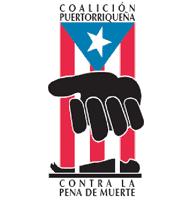
Article(s)
Abolitionist Challenges for 2013 in Puerto Rico
By Puerto Rican Coalition against the Death Penalty, on 7 March 2013
This annual report covers the situation of death penalty cases involving Puerto Ricans who face death penalty proceedings in the federal jurisdiction, as well as in those states of the US where such punishment is strictly upheld, and one case of petition for extradition.
2013
United States

Article(s)
The Abolition of the Death Penalty in Tunisia, a Fight Against Torture
By Organization Against Torture in Tunisia, on 18 June 2020
In its 2019 annual report, the Organization Against Torture in Tunisia (Organisation contre la torture en Tunisie, OCTT) denounced the death penalty and identified it as the most cruel form of torture.
2020
Moratorium
Tunisia
Document(s)
Facts and Figures 2019
By World Coalition Against the Death Penalty, on 1 January 2019
2019
World Coalition
frMore details Download [ pdf - 201 Ko ]
Facts and figures from Amnesty International’s 2019 report on death sentences and executions in 2018
- Document type World Coalition
- Themes list Juveniles, Methods of Execution, World Coalition Against the Death Penalty, Statistics,
- Available languages Faits et chiffres 2019
maping-women-death-penalty-fr
on 8 September 2023
2023

Article(s)
Saudi Arabia: “Killing in the Name of Justice”
By Elisa Belotti, on 7 October 2015
When it comes to the execution of death penalties, Saudi Arabia is one of the most prolific country in the world. This is what emerges from a new report published by Amnesty International in August 2015.
2015
Saudi Arabia
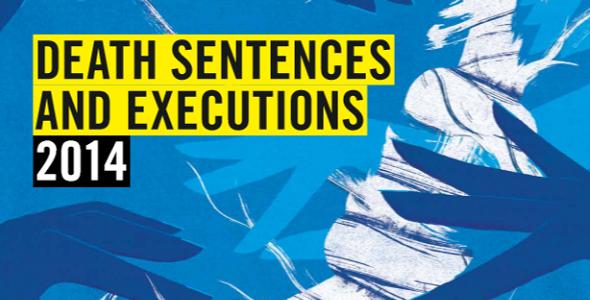
Article(s)
Death sentences and executions 2014
By Amnesty International, on 1 April 2015
This report covers the judicial use of the death penalty for the period January to December 2014. As in previous years, information is collected from a variety of sources, including: official figures; information from individuals sentenced to death and their families and representatives; reporting by other civil society organizations; and media reports. Amnesty International reports only on executions, death sentences and other aspects of the use of the death penalty, such as commutations and exonerations, where there is reasonable confirmation.
2015
Document(s)
Will Wrongful Convictions Be a Catalyst for Change in Japanese Criminal Justice?
By Australian Broadcasting Company, on 1 January 2015
2015
Multimedia content
Japan
More details See the document
Televised report on the flawed Japanese Justice System in an analysis of 2 exonorated prisoners from death row.
- Document type Multimedia content
- Countries list Japan
- Themes list Fair Trial, Innocence,
Document(s)
‘A “Most Serious Crime”? – The Death Penalty for Drug Offences and International Human Rights Law’
By Rick Lines / Amicus Journal, on 1 January 2010
2010
Article
More details See the document
An in-depth analysis of the international law ramifications of applying the death penalty for drug offences. It reviews the the ‘most serious crimes’ threshold for the lawful application of capital punishment as established in the International Covenant on Civil and Political Rights. It then explores the question of whether drug offences meet this threshold by examining the issue through the lenses of international human rights law, the domestic legislation in retentionist states, international narcotics control law, international refugee law and international criminal law. The article concludes that drug offences do not constitute ‘most serious crimes’, and that executions of people for drug offences violates international human rights law.
- Document type Article
- Themes list Drug Offences, Most Serious Crimes,
Document(s)
Not “Waiving” But Drowning: The Anatomy of Death Row Syndrome and Volunteering for Execution
By Amy Smith / Boston University Public Interest Law Journal, on 8 September 2020
2020
Article
United States
More details See the document
Within the international community, other countries have recognized the potential for harm caused by our current system, and as a result have refused to extradite back to the United States individuals who might face the death penalty. These countries cite not only the possibility of execution as reason for refusal, but the waiting process which attends that death as a separate, independent violation of human rights. If we remain unpersuaded by the international community, the behavioral trends of those individuals awaiting execution are telling as well. Within one week in 2008, two individuals awaiting death in Texas committed suicide, reflecting the heightened suicide rates on death row, estimated at ten times greater than those in society at large and several times greater than those in a general prison population. In addition, the widely-recognized practice of “volunteering” for execution permits condemned inmates to waive their state and federally mandated rights to appeal in order to speed up the execution process, in essence “volunteering” to be executed.
- Document type Article
- Countries list United States
- Themes list Death Row Phenomenon, Extradition,
Document(s)
ICCPR Case Law on Detention, the Prohibition of Cruel Treatment and Some Issues Pertaining to the Death Row Phenomenon
By Eva Rieter / Journal of the Institute of Justice and International Studies, on 1 January 2002
2002
Article
More details See the document
This paper discusses some case law on detention issues by the Human Rights Committee (HRC) that supervises the International Covenant on Civil and Political Rights (ICCPR), as well as HRC case law on the so-called “death row phenomenon,” which involves forcing a person to live under conditions that spawn intense fear, distress, and the virtual destruction of the personality while awaiting execution.
- Document type Article
- Themes list Cruel, Inhuman and Degrading Treatment and Punishment, Death Row Phenomenon,
Document(s)
Criminological analysis on deterrent power of death penalty
By Yuanhuang Zhang / Frontiers of law in China, on 1 January 2009
2009
Article
China
zh-hantMore details See the document
Death penalty is the most effective deterrence to grave crimes, which has been the key basis for the State to retain death penalty. In fact, either in legislation or in execution, death penalty can not produce the special deterrent effect as expected. With respect to this issue, people tend to conduct normative exploration from the perspective of ordinary legal principles or the principle of human rights, which is more speculative than convincing. Correct interpretation based on the existing positive analysis and differentiation based on human nature which sifts the true from the false will not only help end the simple, repetitive and meaningless arguments regarding the basis for the existence of death penalty, but also help understand the rational nature of both the elimination and the preservation of death penalty, so as to define the basic direction towards which the State should make efforts in controlling death penalty in the context of promoting social civilization.
- Document type Article
- Countries list China
- Themes list Deterrence ,
- Available languages 犯罪学分析死刑威慑力量(注:英文名翻译)
Document(s)
Capital Punishment at the United Nations: Recent Developments
By Ilias Bantekas / Peter Hodgkinson / Criminal Law Forum, on 1 January 2000
2000
Article
More details See the document
The article discusses the difficulties and controversies surrounding the 1999 Draft Resolution on the Death Penalty to the United Nations General Assembly.
- Document type Article
- Themes list Networks,
Document(s)
The Waiver and Withdrawal of Death Penalty Appeals as “Extreme Communicative Acts”
By Avi Brisman / Western Criminology Review, on 1 January 2010
2010
Article
United States
More details See the document
This paper explores the power struggle between the State and the condemned over the timing and conditions under which an inmate is executed. It begins with a discussion of current public opinion about the death penalty and the ways in which the death penalty has been resisted. Next, it describes capital defendants who elect execution over life imprisonment and considers some of the reasons proffered for waiver and withdrawal. This paper then contemplates whether some instances of “volunteering” should be regarded as “extreme communicative acts” (Wee 2004, 2007)—nonlinguistic communicative acts that are usually associated with protest, especially in the context of a lengthy political struggle (such as hunger strikes, self-immolation, and the chopping off of one’s fingers). In so doing, this paper weighs in on the larger questions of who ultimately controls the body of the condemned and what governmental opposition to waiver and withdrawal may reveal about the motives and rationale for the death penalty. This paper also furthers research on how the prison industrial complex is resisted and how State power more generally is negotiated.
- Document type Article
- Countries list United States
- Themes list Networks,
Document(s)
Chinese Executions: Visualising their Differences with European Supplices
By Bourgon J / European Journal of East Asian Studies, on 1 January 2003
2003
Article
China
More details See the document
European executions obeyed a complex model that the author proposes to call ‘the supplice pattern’. The term supplice designates tortures and tormented executions, but it also includes their cultural background. The European way of executing used religious deeds, aesthetic devices and performing arts techniques which themselves called for artistic representations through paintings, theatre, etc. Moreover, Christian civilisation was unique in the belief that the spectacle of a painful execution had a redemptive effect on the criminals and the attendants as well. Chinese executions obeyed an entirely different conception. They were designed to show that punishment fitted the crime as provided in the penal code. All details were aimed to highlight and inculcate the meaning of the law, while signs of emotions, deeds, words, that could have interfered with the lesson in law were prohibited. In China, capital executions were not organized as a show nor subject to aesthetic representations, and they had no redemptive function. This matter-of-fact way of executing people caused Westerners deep uneasiness. The absence of religious background and staging devices was interpreted as a sign of barbarity and cruelty. What was stigmatised was not so much the facts that their failure to conform to the ‘supplice pattern’ that constituted for any Westerner the due process of capital executions.
- Document type Article
- Countries list China
- Themes list Networks,
Document(s)
Europe as an International Actor: Friends Do Not Let Friends Execute: The Council of Europe and the International Campaign to Abolish the Death Penalty
By Sangmin Bae / International Politics, on 1 January 2008
2008
Article
Ukraine
More details See the document
This article investigates the way in which the Council of Europe enforced the norm against capital punishment in Europe. The Council of Europe, through both moral persuasion and centripetal pressure, compelled its member states to adopt the regionally promoted human rights standard. Ukraine, where the very last execution in Europe took place, accepted the norm after a number of years of resistance and in the face of public opposition to abolition. It was possible because of the adamant role of the Council of Europe in attempting to build a death penalty-free zone in Europe and Ukraine’s strategic will to be integrated within the European regional community.
- Document type Article
- Countries list Ukraine
- Themes list Trend Towards Abolition,
Document(s)
Death Penalty in Korea: From Unofficial Moratorium to Abolition?
By Kuk Cho / Asian Journal of Comparative Law, on 1 January 2008
Article
Democratic People's Republic of Korea
More details See the document
This article provides an overview of the legal regime governing the death penalty and the on-going debate on the death penalty in Korea. It begins by briefly reviewing international treaties that call for the abolition of the death penalty, contrasting them with the retentionist trend in most Asian countries. It then reviews the major decisions of the Korean Supreme Court and the Korean Constitutional Court. It also discusses recent moves in the National Assembly and the National Human Rights Commission to abolish the death penalty. It suggests that the Korean death penalty debate has potentially significant implications for its retentionist Asian neighbours grappling with similar issues.
- Document type Article
- Countries list Democratic People's Republic of Korea
Document(s)
A New Profession for an Old Need: Why a Mitigation Specialist Must be Included on the Capital Defense Team
By Pamela Blume Leonard / Hofstra Law Review, on 1 January 2003
2003
Article
United States
More details See the document
The fundamental task of the mitigation specialist is to conduct a comprehensive social history of the defendant and identify all relevant mitigation issues. The 2003 revised edition of the American Bar Association Guidelines for the Appointment and Performance of Defense Counsel in Death Penalty Cases recognizes the mitigation specialist as an “indispensable member of the defense team throughout all capital proceedings.” What are the particular responsibilities and contributions of a mitigation specialist and what makes them so essential to the capital defense team as to warrant this long overdue recognition by the ABA Guidelines?
- Document type Article
- Countries list United States
- Themes list Legal Representation,

